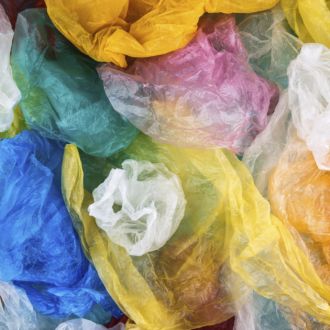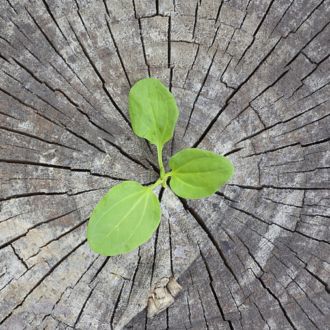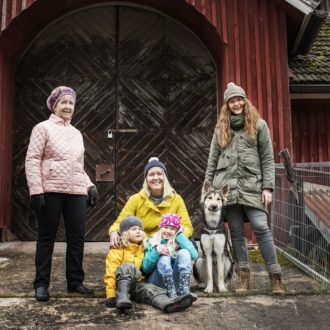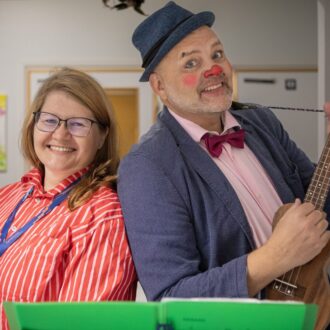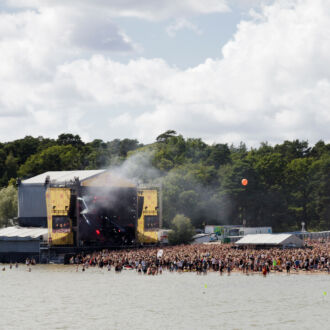Making ecologically sound choices is a no-brainer for this family of six.
“Hi! … And bye!”
A tall young man walks into the family kitchen and walks straight out again. Viljo Kivistö (19 at the time of writing) is heading for the gym with a rucksack on one shoulder. A few moments later his brother Touko (17) does the same thing.
The cosy kitchen is the heart of everyday life for the Kivistö family. Mother Terhi (47), father Markus (53), four children and a cat lead a life that is fairly typical for families with kids. Terhi and Markus, who are historians and publishers by profession, work busy days and are just as busy in their free time, keeping track of the kids and cooking and cleaning.
The kitchen is also the centre of many ecological decisions that the family makes every day, such as waste sorting.
“Recycling is made pretty easy here in the city,” Markus says. They live in the southwestern Finnish city of Turku. Building owners are required by law to facilitate waste sorting. How much sorting depends on the number of apartments.
“In a kitchen cupboard, we’ve got separate bins for paper, cardboard, plastic, glass, metal, compost and mixed waste. We then empty them into larger containers just a few steps from our front door. People are so good at recycling that the container for plastic often fills up quickly.”
For the children, too, recycling is the obvious thing to do. Environmental education forms an integral part of the school curriculum. Ecological choices are taught from kindergarten onward. Some school canteens have also installed scales to measure the amount of food that is binned during lunch. It’s an efficient way to make an important point.
“We hardly waste any food,” says Terhi. “We plan our groceries carefully, and the kids know to take only as much food as they will eat. I’ll have our dinner leftovers for lunch the following day.”
Besides optimising the amount of food they need, the Kivistös actively rescue food from going to waste.
“We use a waste food app that allows us to buy leftover food and groceries that are approaching their sell-by date from restaurants, bakeries and supermarkets,” says Terhi. “We pay half the price and reduce overall food wastage at the same time.”
The family tries to avoid excess consumption. Clothes and toys are bought from flea markets or recycled from siblings and cousins. When they buy something new, the parents invest in quality and durability.
What is no longer usable finds its way to collection sites for textiles, electronics, and so on.
“The things we no longer need can become useful for others,” Terhi says.
Finns recycle their bottlesIn Finland, an impressive 95 percent of cans, 90 percent of PET plastic bottles and 88 percent of glass bottles are recovered. Returning bottles and cans is engrained in every Finn, encouraged by a nationwide deposit-refund system. With reverse vending machines (bottle-return machines) at filling stations and in even the smallest supermarkets, it is also very easy. The beverage industry is an integral part of the cycle. Becoming a member of an approved deposit-refund scheme gives manufacturers and importers exemption from the beverage packaging tax of €0.51 per litre. More info is available on the website of Palpa, the nonprofit organisation that runs the return system. |
By Terhi Rauhala, ThisisFINLAND Magazine 2020
